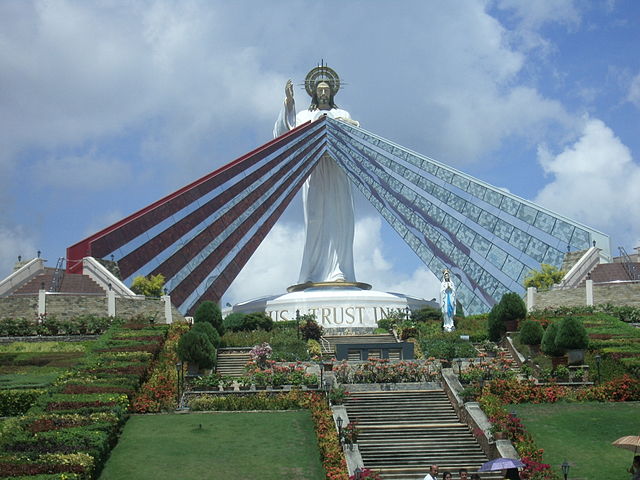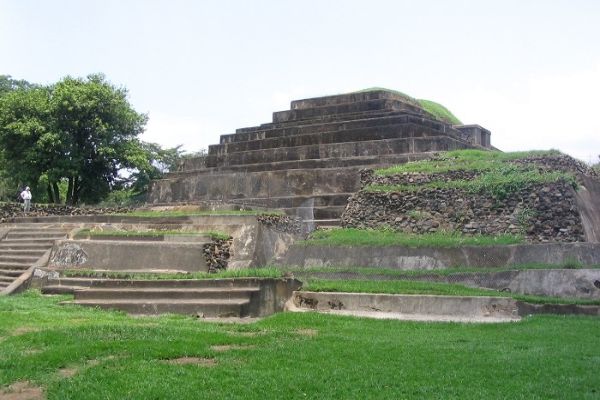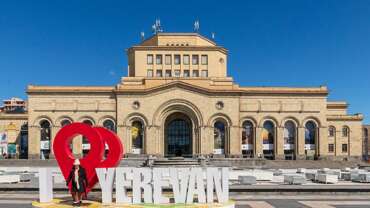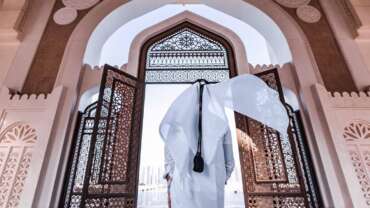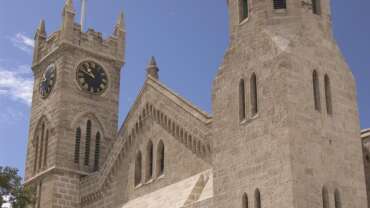El Salvador - The 45 Minute Country
El Salvador, officially the Republic of El Salvador, is the smallest and the most densely populated country in Central America. It is bordered on the northeast by Honduras, on the northwest by Guatemala, and on the south by the Pacific Ocean. El Salvador’s capital and largest city is San Salvador.
History of El Salvador
Early history
Before the Spanish arrived in Salvadoran territory in the 16th century, it was occupied by a complex of indigenous peoples. Of these the Pocomam, Chortí, and Lenca, all related to the Maya, were the more ancient, but the Pipil, whose civilization resembled that of the Aztecs in Mexico, were predominant. Archaeological ruins dating from pre-Columbian times are Tazumal, Pampe, El Trapito, and San Andrés. Of several large towns founded by indigenous people, Sonsonate and Ahuachapán still exist. For more information on early history and the treatment of the country in its regional context, see Central America.
The colonial period
The Spanish conquest and colonization of El Salvador began in 1524 with the arrival of an expedition from Guatemala led by Pedro de Alvarado. Alvarado’s troops met determined opposition from a Nahua tribe, the Pipil, that occupied much of the region west of the Lempa River. However, superior tactics and armaments enabled the Spaniards to push on to the Pipil capital of Cuscatlán. Alvarado soon returned to Guatemala, but a second expedition, in 1525, founded a Spanish town called San Salvador near the site of Cuscatlán. Pipil warriors forced the Spanish settlers to withdraw, however, and the community would be resettled several times before it was permanently established in 1528.
Thereafter, the town of San Salvador would serve as the capital of a province of the same name that included most of the eastern three-fourths of the territory of present-day El Salvador. The area to the west (comprising the present-day regions of Sonsonate, Santa Ana, and Ahuachapán), which the Pipil called Izalcos, was organized in 1558 as the autonomous province of Sonsonate and would not be incorporated as a part of El Salvador until 1823.
The lands that would form El Salvador became the agricultural heartland of the captaincy general of Guatemala. Although most of the inhabitants were obliged to depend on subsistence farming, the more fortunate Spaniards found wealth in the export of a variety of local products, all of which experienced periods of “boom and bust.” Cocoa was the most important source of wealth during the 16th century. Increased competition from other colonies led to a marked drop in revenue from cocoa by 1590, and the following century was clearly a period of stagnation for the region. Recovery in the 1700s came as a result of increased exports of indigo.
The indigo trade led to the development of a fairly sophisticated form of commercial agriculture and the creation of large estates operated by families whose members played a leading role in provincial affairs. For the indigenous people, however, the indigo boom chiefly meant that an additional burden was placed on an already exhausted workforce.
Independence
A variety of considerations caused the Salvadoran indigo planters to take a leading role in agitating for Central American independence. These included the hard times caused by a sharp decline in indigo production during the first decade of the 19th century, a long-held hostility toward Guatemalan merchants who controlled much of the economy of San Salvador, and the conviction that the province should be organized as a bishopric so that it need no longer depend upon the archbishop of Guatemala for pastoral services.
In November 1811 the arrest of a member of one of the planter families ignited an uprising led by José Matías Delgado, the provincial vicar of San Salvador, and his nephew Manuel José Arce. The rebels held the government for nearly a month before Spain’s authority was restored by the captain general of Guatemala, whose measures seemed more conciliatory than repressive. A second, shorter uprising in 1814 had wider popular support, and it provoked a more severe response from the captain general, costing Arce more than four years in prison.
In 1821 the province endorsed Guatemala’s declaration of independence from Spain. The Salvadorans, however, opposed the Guatemalan decision to accept incorporation into Agustín de Iturbide’s Mexican empire, a stance that led to confrontations with Guatemalan and Mexican armies. Faced with defeat late in 1822, a Salvadoran congress sought adoption of a resolution providing for the province’s annexation to the United States, but this scheme was abandoned when Iturbide’s government collapsed in 1823. Meeting in June of that year in Guatemala City, a Central American constitutional convention chose Delgado as its president, appointed Arce as a member of the provisional executive triumvirate, and went on to draft a constitution, which was completed in 1824. The state thus created was now called the Federal Republic of Central America, having earlier been termed the United Provinces of Central America; in 1825 Arce became its first president.
Nationhood
The state of San Salvador (the modern-day name, El Salvador, was not used until 1841) played an important part in the affairs of the Central American federation. Not only was it the birthplace of the federation’s first president, but it was also there that a revolt was sparked against Arce in 1827, beginning the civil war in which Central American liberals and conservatives contested for control of the new country. This conflict, which caused the collapse of Arce’s presidency, ended in 1829 with the seizure of the federal government by Francisco Morazán, commander of the liberal army. Having cast their lot with Morazán, the Salvadorans became his most loyal allies and were rewarded in 1834 with the transfer of the federal capital to the city of San Salvador. The Salvadorans were so attached to the ideals of federation that the state did not assume sovereign powers until 1841, one year after the other four member states had already left the federation.
Sovereignty did not signal the arrival of peace and prosperity for El Salvador; if anything, the new country experienced increased civil strife and international conflict for several decades after 1841. From that year until 1863, just one chief of state could claim continuous service that ran two full years. During this time, El Salvador was involved in wars with neighbouring countries that usually arose from attempts to meddle in their politics. Often El Salvador found that the final arbiter of its political affairs was Rafael Carrera, conservative dictator of Guatemala from 1839 until his death in 1865. In the midst of this turmoil, El Salvador secured the establishment of the long-sought bishopric and saw the beginnings of the coffee industry, which was advanced in part by the policies of Pres. Gerardo Barrios Espinosa (1861–63).
A coffee republic
The presidency of Francisco Dueñas (1863–71) pointed toward greater political stability for the country. Real change, however, came when his overthrow in 1871 marked the beginning of a 60-year period of rule by liberals, who focused on the pursuit of economic growth and domestic tranquility. Late in the 19th century, a substantial shift in the country’s economy became essential when the development of synthetic dyes severely reduced the income normally generated by the export of indigo. Salvadorans solved this problem by means of a “coffee revolution.” New lands had to be opened to cultivation, a step facilitated during the administration of Rafael Zaldívar (1876–85), who authorized the sale of the land of indigenous people (Indians). These proceedings provoked uprisings by the indigenous people, which were put down by a newly created rural mounted police force.
The coffee planters developed a highly efficient system of plantation enterprises and formed a closely knit elite that used its growing economic strength to ensure that the government served its interests. Among the small number of controlling families, just two—the Meléndez and Quiñónez families—monopolized the office of the president between 1913 and 1927.
People of El Salvador
Ethnic groups
The intermarriage of Spanish settlers with the indigenous population of the region has resulted in a largely ethnically homogeneous people. Almost nine-tenths of the population is mestizo (people of mixed indigenous [Indian] and European ancestry); the remainder consists of indigenous peoples (including the Izalco and, from the village of Panchimalco, the Pancho), people of European ancestry, and other small groups.
Languages
Spanish is the official language of El Salvador. During the precolonial epoch various indigenous dialects were spoken, the most important of these being Nahuatl, spoken in the central region of the country, and Poton, spoken in the east. After the initial conquest, Spanish became the official language, and the indigenous dialects slowly fell into disuse. A government effort was made to preserve Nahuatl, but it proved unsuccessful.
Religion
About one-half of Salvadorans are Roman Catholics. Since the 1990s Evangelical Protestantism has made inroads, particularly among the poor, and by the 2010s more than one-third of Salvadorans were Protestants. There are also smaller groups who practice other faiths.
Art & Culture of El Salvador
The arts
El Salvador’s elite have long prized the arts, especially literature. But any kind of antigovernment literature was an extremely dangerous enterprise during the civil war years. Many Salvadoran writers, artists, and intellectuals fled the country. Few returned, but those who did, including poets Manlio Argueta and Francisco Rodriguez, gave frequent readings before large audiences. One of the country’s most widely respected poets, Roque Dalton, was assassinated in 1975 as a result of leftist internecine struggle.
Private benefactors have played as important a role as that of the government in patronizing the arts. The government has increased its contribution to national cultural life, particularly in its expansion of secondary and continuing education.
Cultural milieu
The cultural life of El Salvador, like its population, is an amalgam of Indian and Spanish influences, though European influences predominate, largely because most Indian cultural activities have been suppressed by the government since the 1930s. Indian customs do survive, however, in small clusters of villages, such as those around Izalco and Nahuizalco, and traditional crafts are produced in Ilobasco (pottery) and Izalco (textiles). This cultural mix also can be seen in the country’s rich tradition of folklore, poetry, and painting. The Roman Catholic Church also has been a major influence on almost every aspect of cultural life.
Daily life and social customs
Owing to the large number of Salvadorans who have immigrated to, or returned from, the United States since the 1980s, the lifestyle of broad segments of El Salvador’s urban population (and even that of those in many rural areas) has become increasingly Americanized. In one of San Salvador’s wealthier neighbourhoods, Escalón, a number of multiscreen cinemas have opened, and the city’s principal boulevard is lined with shopping malls and fast-food restaurants. On weekends North American, South American, and Mexican rock music is played in the bars.
Salvadorans of all classes enjoy their country’s folk music. Although the country’s dozens of radio stations mostly play North American and Mexican popular music, there has been a revival of the canción popular, folk music often mixed with political commentary. Canción popular can frequently be heard playing in El Salvador’s restaurants, which serve staples such as casamiento, a spicy mixture of rice and beans, and pupusa, a sandwich made of cheese, meat, or beans wrapped in cornmeal.
Surf City: Pulling Back the Veil on El Salvador
What surfers have found in El Salvador is a far cry from the preconceived notions compounded by sensationalist headlines.
El Salvador is a small country with a big reputation. Its notoriety for gang violence far exceeds the attention that it deserves as a tropical paradise for surfers. At least in the US, most people are familiar with the gang MS-13 and its ties to El Salvador, but most couldn’t tell you anything else about the country. Could your average Joe even place El Salvador on a map?
While the small Central American nation of six million has suffered a global PR problem over the decades fueled by civil war and violence, surfers have been the principal early adopters of El Salvador’s coast, willing to test the waters of places that governments advise against visiting. The nation is blessed with a coast that beckons the robust swells of the South Pacific, drawing the raw energy to the tropical waters covering its reefs, points, and beaches that cause the waves to bend and break in forms that surfers only dream of.



